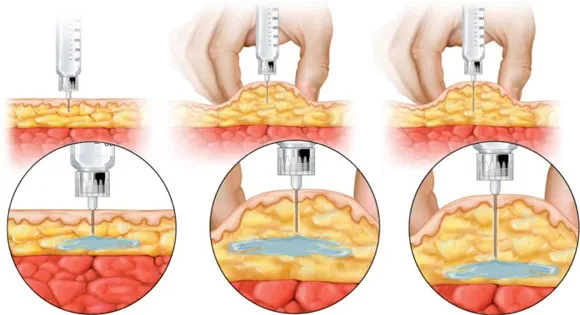Lic. Teresa Tafolla, a diabetes educator says: “It has been demonstrated in multiple scientific studies that insulin is the best treatment for diabetes care.
For this reason, it must be used and used effectively with a correct injection technique, otherwise, there could be an important glucose lack of control that could cause unfavorable health complications. ”
To optimize results in insulin treatment, the recommendations of the educator in diabetes for a correct injection technique are:
Glycosylated hemoglobin test.Today is the most reliable test to measure the control that is taken from diabetes, since it averages the blood glucose figures every 3 months, according to the amount of erythrocytes (red blood cells that contains hemoglobin)that are impregnated with glucose in their life time (that is what they are glycosylated).That is why the test must be done with this frequency.
Use short needles.Insulin must reach only subcutaneous tissue, since it is there where it acts in the best way.To achieve this, the needles must be ultra short and ultra fine, 4mm on pen and 6mm devices in conventional syringe.
Pentapoint technology.As indicated by its name, the tip of the needles have 5 bezels forming a diamond tip, which represents an important decrease in pain when penetrating the skin.It is highly recommended since it encourages the adherence of treatment, making it more friendly and comfortable.
Injection sites.The ideal sites are abdomen (not so close to the navel), thighs, buttocks and arm, since they are the parts of the body with the greatest amount of subcutaneous tissue, which makes them suitable for insulin application.
Rotation of injection sites.It is important to change the injection place frequently to avoid serious health consequences, including lipodystrophies.Leave minimum space of the width of a finger between a picket and another within the same area, and vary the areas approximately every 4 weeks.The use of rotation templates is very useful for this purpose.
Do not reuse needles and syringes.All injection devices should be used only once, to avoid skin damage and avoid alterations in prescribed insulin doses, among other possible complications that affect the success of the treatment.
Food and physical activity.As part of the comprehensive treatment for diabetes control and reinforcement of insulin treatment, the healthy and balanced eating previously approved by the treating doctor as well as adequate physical activation according to the patient's possibilities must be taken, since exerciseIt helps insulin to work better in the body and control overweight and obesity that often accompanies the condition.
Lic. Tafolla concludes: “All recommendations and treatment conditions must be supervised and approved by the patient's health team, whether the treating doctor or health professionals.It is very simple and accessible to achieve a correct injection technique, with discipline and constancy the optimization of insulin treatment will achieve important health benefits. ”


